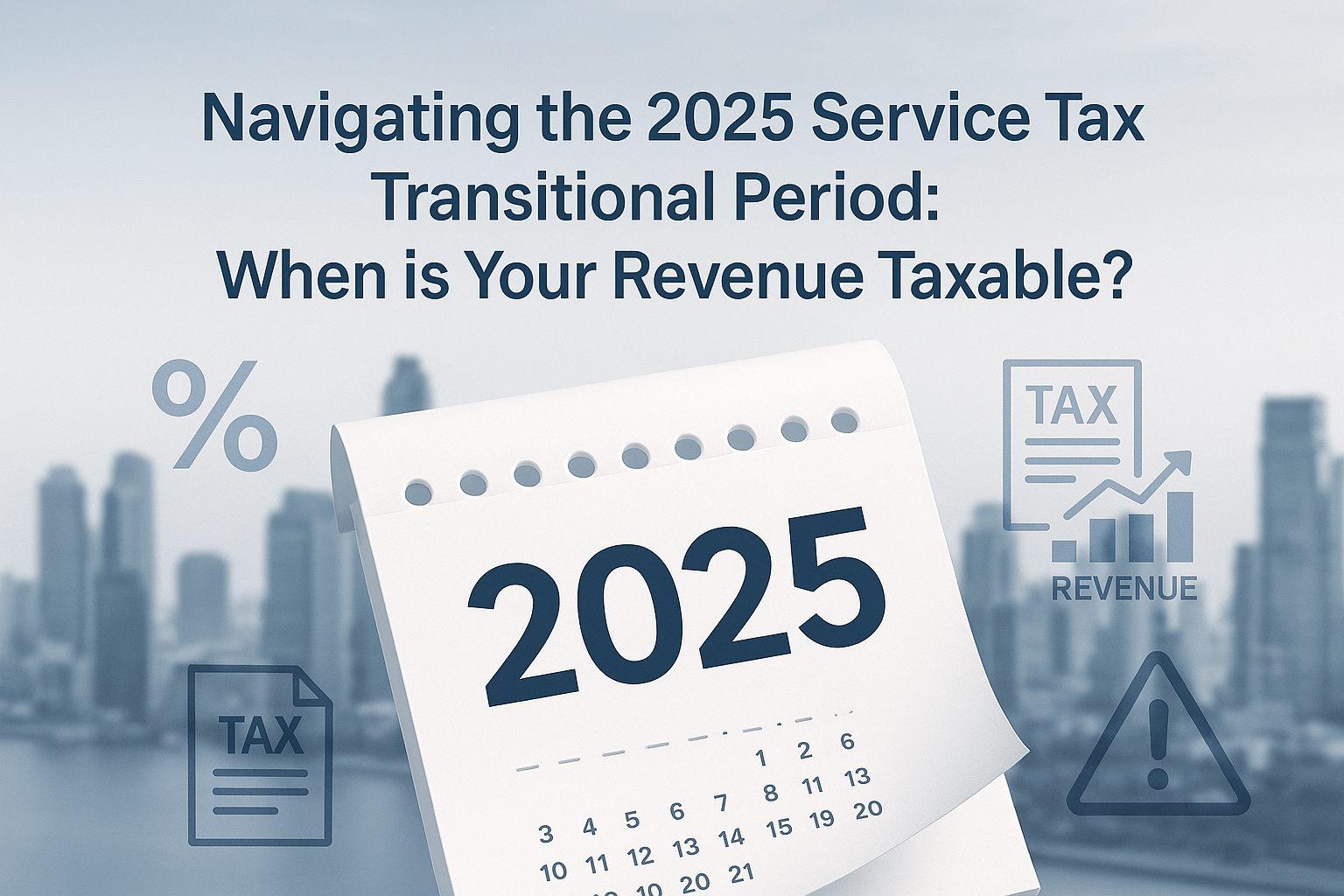With recent updates to Malaysia’s service tax regulations, many business owners are asking a critical question: “How do these changes affect invoices and payments that happen around the transition date?” Understanding when to charge service tax can be confusing, especially during this transitional period.
Getting it wrong can lead to compliance issues with the LHDN, while getting it right ensures smooth operations and happy clients. In this article, we’ll break down the core principles using four clear scenarios to help you understand when your services are subject to the new tax rules.
The fundamental principle in Malaysian tax law is that revenue is recognized—and thus becomes a taxable point—when a service is rendered or is to be rendered. This is the moment an obligation is created. It’s not always about when the money is received. Let’s see how this plays out in practice.
The Four Scenarios Explained
Here are four common scenarios businesses face during a tax transition period.
Scenario 1: Service & Payment Received BEFORE the Change
- Timeline: You rendered the service and received the payment before the new tax rules took effect.
- Result: Not subject to the new service tax. Your revenue was recognized under the old rules. This is the most straightforward scenario.
Scenario 2: Service & Payment Received AFTER the Change
- Timeline: The service was rendered and payment was received well after the new tax rules were implemented.
- Result: Subject to the new service tax. As the entire transaction falls within the new period, the new tax rules apply.
Scenario 3: Service Rendered BEFORE, Payment Received AFTER
- Timeline: You completed the service before the new tax rules came into effect, but the client only paid you after the new rules were active.
- Result: Not subject to the new service tax. The key taxable event is the date the service was rendered. Since this happened before the change, the old rules apply, even if payment came later.
Scenario 4: Payment Received BEFORE (Advance Payment), Service Rendered AFTER
- Timeline: You received a payment from a client before the new tax rules began, but the service will only be delivered after the rules are in effect. This is a common point of confusion.
- Result: Not subject to the new service tax. According to regulations, an advance payment is recognized as revenue on the date it is received, because it creates an obligation for you to provide the service in the future. Since the revenue was recognized before the change, the old rules apply.
- Note: This is different from a security deposit, which is only recognized as revenue when it is forfeited or used to pay for the service.
Key Takeaways for Your Business
- The Service Date is Key: In most cases, the date the service is fully rendered determines which tax rules apply.
- Advance Payments are an Exception: Money received upfront for future services is typically recognized as revenue immediately upon receipt.
- Documentation is Crucial: Ensure your invoices, contracts, and payment receipts have clear dates to support your tax treatment in case of an audit.
Feeling Unsure? We Can Help.
Navigating tax changes can be complex, and every business has unique situations. If you’re unsure how these rules apply to your specific invoices or business model, you don’t have to figure it out alone.
At SMONE, we help businesses like yours stay compliant and confident every day. Contact us for a consultation to ensure your business is perfectly aligned with the latest tax regulations.
(Disclaimer)
This article is for general informational purposes only and does not constitute professional tax advice. We recommend consulting with a qualified tax professional for advice on your specific situation.


